The educational materials listed on this page are about Cover Crops.
What is a cover crop? A common definition of a cover crop is a plant that is used as part of a crop rotation to improve the soil, scavenge or add nutrients, smother weeds and as a tool for erosion control. Cover crops are not harvested, but are left in place in no-till farming or turned under, especially in organic farming. Another term for cover crops is green manures, especially when the crop residue is incorporated into the soil.
Cover crops can improve soil fertility by adding organic matter, and they help in nutrient management planning by adding nitrogen to soil or by taking up nutrients in soil after cash crop harvest. Winter cover crops are most common in corn and soybean grain production systems, while spring cover crops or summer cover crops can fit many vegetable production systems. Cover crops improve soil moisture, especially over time as soil organic matter and soil tilth are improved.
Cover crop cocktails are used by many farmers as a way to improve soil health. Cocktails or cover crop mixes usually include a grass cover crop such as cereal rye or annual ryegrass, a legume cover crop like crimson clover or hairy vetch, and sometimes a brassica cover crop like forage radish, sometimes called “tillage radish.” Cover crop benefits from cocktails are often greater than seeding a single cover crop species. Cover crop mixes contribute to pest control by attracting beneficial insects and they may increase weed control by providing more ground cover and leaving more crop residue on the soil surface. Some cover crops can mitigate plant disease by suppression soil pathogens. Cover crop cocktails also attract pollinators, including native pollinators.
Cover crop seed is increasingly available from seed companies. They may also be able to help you with information about cover crop selection as well as best timing and methods of planting cover crops.
Some SARE books will help you decide how and when to grow cover crops. Managing Cover Crops Profitably, Crop Rotation on Organic Farms, and Building Soils for Better Crops are comprehensive guides or manuals. Another useful resource is the SARE topic brief Cover Crops for Sustainable Crop Rotations, which summarizes the usefulness of rotating cover crops in any cropping system. For organic farming, see the Organic Transitions business planning guide.
Showing 1-20 of 95 results
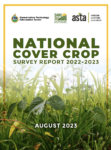
New Cover Crop Survey Data Challenges Assumptions on Role of Incentive Payments
Adapted from the Conservation Technology Information Center: A new national survey report has found that the vast majority of farmers who use cover crops don't need incentive payments to continue with the practice because of how much they appreciate its value to their land and business. According to the National Cover Crop Survey, incentives play a key […]
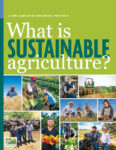
What is Sustainable Agriculture?
This award-winning report provides a sampler of best practices in sustainable agriculture—from marketing and community vitality to cover crops and grazing—as well as eight profiles of producers, educators and researchers who have successfully implemented them.
America's Heartland "Leaders in Sustainable Agriculture" Now Available on YouTube
SARE recently partnered with PBS KVIE to produce an episode of RFD-TV's America's Heartland featuring four farmers describing their commitment to sustainability, how they plan to overcome modern farming challenges, and how SARE has impacted their farming and ranching practices. The full 24-minute episode titled Leaders in Sustainable Agriculture is now available at https://www.sare.org/resources/leaders-in-sustainable-agriculture/. Watch: Videos featuring each […]

Farmers: Share Your Thoughts on Cover Crops in the National Cover Crop Survey!
Farmers are invited to share their thoughts on cover crops in an online survey at bit.ly/CoverCrop23. Why do you plant cover crops...or why don't you? What do you want to know? Your insight will help guide research, communications, seed development, and more. This National Cover Crop Survey is the seventh since 2012 conducted by the USDA-NIFA […]
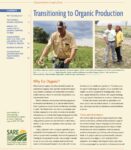
Transitioning to Organic Production
Transitioning to Organic Production lays out many promising conversion strategies, covering typical organic farming production practices, innovative marketing ideas and federal standards for certified organic crop production.
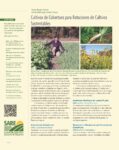
Cultivos de Cobertura para Rotaciones de Cultivos Sustentables
Cultivos de Cobertura para Rotaciones de Cultivos Sustentables is an abbreviated, Spanish language translation of SARE's Cover Crops for Sustainable Crop Rotations topic brief.
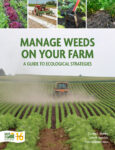
Manage Weeds on Your Farm: An Ecological Approach
SARE’s newest book, "Manage Weeds on Your Farm: A Guide to Ecological Strategies," examines the biology and behavior of common weeds and provides an integrated set of non-chemical control strategies that exploits their weaknesses.

Soil Health Principles and Practices Videos
Experienced farmers and Sustainable Agriculture Research and Education (SARE) provide information on managing and improving soil health. Farmers discuss practices such as cover cropping, and using mulch and compost to improve soil health.

Manage Weeds On Your Farm
Manage Weeds on Your Farm is a definitive guide to understanding agricultural weeds and how to manage them efficiently, effectively and ecologically—for organic and conventional farmers alike.
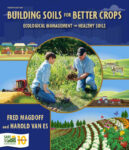
Building Soils for Better Crops
The fourth edition of Building Soils for Better Crops—enhanced and expanded—explains how to use ecological principles to build soil health and boost fertility, yields and overall sustainability.

New “Cover Crops and Soil Health” Video from SARE
The newest episode of SARE’s "What is Sustainable Agriculture" animation series illustrates how producers can use cover crops to improve productivity and sustainability. In just a few short minutes, “Cover Crops and Soil Health” outlines how cover crops can build soil structure, protect water quality, suppress pests and improve a farm's bottom line. Combining cover […]
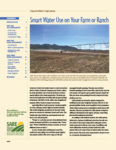
Smart Water Use on Your Farm or Ranch
As producers throughout the nation grow increasingly concerned about water scarcity, farmers, ranchers and agricultural educators are beginning to explore new, conservation-oriented approaches to water use.
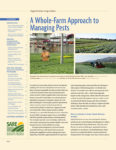
A Whole Farm Approach to Managing Pests
This 16-page bulletin helps producers—and the educators who work with them—use ecological principles across the entire farm to control pests.
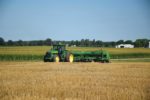
National Farmer Survey Documents a Wide Range of Cover Crop Benefits as Acreage Continues to Expand
Despite the crippling rainfall that significantly delayed planting across much of the country in 2019, more than 90% of farmers participating in a national cover crop survey reported that cover crops allowed them to plant earlier or at the same time as non-cover-cropped fields. Among those who had "planted green," seeding cash crops into growing […]
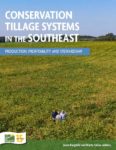
Conservation Tillage Systems in the Southeast
This production manual provides comprehensive guidance on conservation tillage systems for farms in the southeastern United States. It covers the core components of conservation tillage systems and includes both regional considerations and producer experiences.
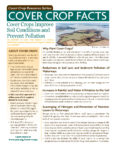
Free Fact Sheets Identify Broad Benefits of Cover Crops
Along with cutting costs and increasing crop productivity, cover crops provide various ecosystem services that benefit the environment both on and off the farm. For instance, adding cover crops to a rotation can significantly increase the portion of the year when living roots are present for soil organisms to feed on, which can have a […]
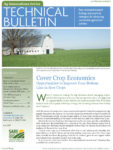
Cover Crop Economics Report Now Available in Print
Cover Crops Offer Options in Wet Soil As more farmers across the nation begin to incorporate covers into their rotations, they find that this valuable conservation practice pays in more ways than one. Many farmers in states suffering from oversaturated fields that prevented or delayed planting are considering cover crops. To help farmers evaluate the […]

When Do Cover Crops Pay? New USDA-SARE Report Addresses the Question
Farmers around the country are planting cover crops on millions of acres to protect and improve the soil, and the more that farmers use cover crops, the more they value this conservation practice. Cover Crop Economics, a new report published by USDA-SARE looks at the economics of cover crops to help farmers answer that big […]

What is Soil Health?
Soil health plays an essential role in raising healthy, productive crops and livestock. With this interactive infographic, learn how practices such as cover crops, no-till, crop rotation and the integration of livestock work in concert to improve soil health.

Cover Crop Economics
Cover crops can build soil health, control weeds, conserve moisture, provide grazing opportunities and more. But when do they start to pay for themselves? This analysis looks at the economics behind different management scenarios to determine if cover crops are likely to improve profitability in one, three or five years of use in corn and soybean rotations.